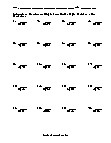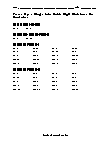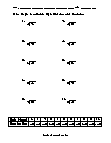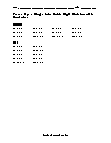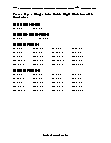Single Into Double Digit Division with Remainders Worksheets
How to Divide Double-Digit Numbers by Single Digit Values There is no denying that children grasp addition and subtraction quicker than grasping the concepts of multiplication and division. Particularly, division requires a lot of practice and time to master. As soon as the students start learning division, they will encounter division with the single-digit number. It is the most elementary type of division and can be learned through continual reinforcement. Below we have elaborated on the steps that go into the division of double-digit numbers with a single-digit number. - First, write down the problem with a double-digit number under the division symbol and single-digit number outside the division symbol. - We will start the problem by observing the numbers and identifying whether the double-digit number is divisible by the single-digit number. Once we have identified that we will figure out how many times the double-digit number goes with the single-digit number. For instance, if we have 48/2, then we know that 24 x 2=48. - If the number is completely divisible, we will write the answer (quotient) above the division symbol and get zero remainders. - However, if the double-digit number is not completely divisible by the single-digit number, we will find the next smaller number. We will write the answer above the division symbol and get a remainder.
-
No Remainders Basic Lesson
Demonstrates how to solve a single into double digit division problem. How many fives are there in 10?
View worksheet -
No Remainders Intermediate Lesson
Walks students step-by-step through division problems. 2 practice problems are available.
View worksheet -
No Remainders Independent Practice 1
Asks students to determine the quotient in 20 division problems. The answers can be found below.
View worksheet -
No Remainders Homework Worksheet
Reviews single into double digit division for students to work on at home.
View worksheet -
Remainders Basic Lesson
Demonstrates how to tackle a single into double digit division problem. How many fives are there in 12?
View worksheet -
Remainders Intermediate Lesson
This lesson use a table to further clarify the form of division problem. A math scoring matrix is included.
View worksheet -
Remainders Independent Practice 1
20 division problems. The answers can be found below.
View worksheet
Lucky 7!
Give your friend your calculator and have her enter a 3-digit number twice to form a 6-digit number. Have her divide it by 11. Then have her divide that number by 13. Finally, divide by the original 3 digits. The answer will be a lucky 7.
Candy Bar Math
A box of candy bars can be divided equally (without splitting the bars) among 2, 3, or 7 people. What is the least number of candy bars the box could contain? 42. The lowest common denominator of 2, 3, and 7 is 2 x 3 x 7 or 42.



